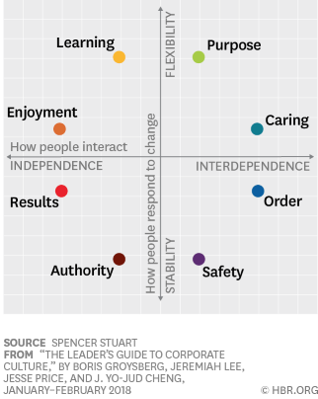A leader is always on stage, always being watched. Today we take that further and look at a leader’s role in shaping organizational culture.
Leading culture change starts with your example
A leader is responsible for culture as much as for organizational vision, strategy, and performance. As a leader you will get what you ask for in your organization’s culture. Your words, behaviors, and actions set the tone that others follow.
Align the business to the culture you want
All aspects of a business can be adjusted to support or erode a culture. Be intentional with the levers you control:
- Policies
- Remuneration and incentives
- Who is hired
- Who is exited
- Rewards and accolades
- Where the money is spent
Consistency matters across the organization, because together you define the culture. The difference for the leader is that you are responsible for the whole, because it is happening on your watch.
Map your culture: eight styles and two dimensions
Research brings clarity to the sometimes murky world of culture. In the Harvard Business Review article “The Leader’s Guide to Corporate Culture” (Groysberg, Lee, Price, Cheng), the authors present eight types of company culture through two dimensions: People Interactions, from highly independent to highly interdependent, and Response to Change, from stability to flexibility.

The chart shows the eight cultural styles as they relate to these dimensions.
Adjacent styles and alignment
The authors hypothesize that it is easier for an organization to maintain alignment to cultural styles that are adjacent to each other on the chart, such as safety and order, than to styles located across from one another, such as safety and learning. Read the full article for the pros and cons of each style and for insights into combined styles.
The seven elements of an adaptive culture
Further insight comes from the MIT Sloan Management Review article “Why Every Executive Should Be Focusing on Culture Change Now” (Hollister, Tecosky, Watkins, Wolpert). The authors outline seven elements of an adaptive culture, well suited to today’s rapidly changing environment:
- Customer centricity
- Ecosystem focus
- Analytical orientation
- Collaborative reflex
- Bias to action
- Learning mindset
- Leader as enabler
Putting it to work: leading culture change in your context
The MIT Sloan guidance on adaptive culture, combined with the broader Harvard model, offers a practical way to design a culture that supports your mission, vision, and values. With the information and tools available today, you can be as intentional about your culture as you are about every other aspect of your business. Leading culture change starts with your example, and it is reinforced by the choices you make every day.
Photo Credit: Pexels – Chris F

